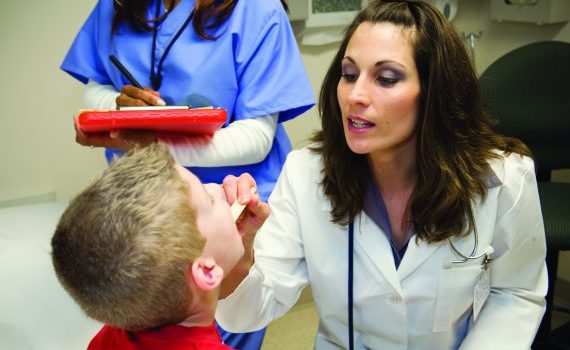Blowing bubbles is fun. As a kid, I marveled at the almost magical way bubbles rose through the air, powered by a mere puff from my lungs, on a seemingly endless journey upward. And then they popped, unable to withstand the laws of nature. Market bubbles behave similarly, rising with indifference to the laws of nature. And much like their soapy namesakes, market bubbles always pop, with the remnants of their inflated selves crashing down …
Read MoreKnee Pain in a 78-Year-Old
Case A 78-year-old man presents to an urgent care center with bilateral knee pain that he has had for 1 week. The pain is worse in his right knee and is worse with ambulation. He says that he has not experienced any recent trauma, but he does note that he has been helping his son move into an apartment. He reports no fever, dizziness, chest pain, or shortness of breath. He has hypertension, for which …
Read MoreYoung Football Player with Sudden Chest Pain
Case A 20-year-old previously healthy man presents with sudden onset of substernal chest pressure after completing football practice. His chest pain is nonradiating, nonreproducible, and nonpositional. He does not have associated palpitations, dyspnea, or diaphoresis. He reports that he has not had recent upper respiratory tract infections or contact with ill people. He does not have a history of using alcohol, tobacco, or illicit drugs. He has no family history of sudden cardiac death or …
Read More
Painful Nose Crusting in a Child
Urgent message: Common nasal infections can have serious health consequences if not quickly diagnosed and treated. Introduction Both children and adults present to urgent care centers with nasal pain. Infectious causes of such pain include impetigo, furuncles, and nasal vestibulitis (NV). Noninfectious causes include squamous cell cancer and lupus vulgaris. A careful physical examination and a thorough medical history can allow the health-care provider to rule out more serious conditions or to transfer the patient …
Read MoreAbstracts In Urgent Care – November 2016
Sean M. McNeely, MD
Read More
Pediatric Oral Lesions in the Urgent Care Setting
Urgent message: Being able to recognize the distinct oral lesions of common illnesses in children is essential, but it can be difficult to conduct an oral examination in frightened young children. Introduction Inspecting intraoral lesions in children will often confirm a diagnosis, but getting uncooperative patients to let the clinician visualize such lesions is challenging. Here we provide helpful examination tips and review common pediatric infectious and allergic oral lesions and their treatment. Techniques for …
Read MoreMaintenance of Certification: The Odyssey Continues
These are by far the most frequent questions I am asked by urgent care physicians: “My primary board certification is expiring. Do I have to recertify? Which of the urgent care boards should I take?” If you have been in urgent care practice long enough, you’ll come to a painful moment of truth: Our primary board certification is in a specialty we no longer practice, covering competencies we no longer use. To make matters worse, …
Read More
Pain in the Hand After Punching a Wall
Case An 18-year-old man presents to an urgent care center with pain at the distal aspect of the metacarpal bone of the little finger. The pain began 2 hours earlier, after he punched a wall. He has pain with range of motion and a minimal amount of numbness in the finger. He reports that he has no other injuries. View the image taken (Figure 1) and consider what your diagnosis would be.
Read MoreA Fall from a Roof by an Adult
Case A 29-year-old woman presents to an urgent care center after a fall from the roof of her house, where she was cleaning the gutters. She reports that her right heel began hurting intensely immediately after the fall and that the pain worsened in the time it took for a family member to get her to the center. She cannot bear weight on her right leg. She mentions that she is a runner who often takes part in …
Read MoreAbstracts in Urgent Care – October 2016
Watching for the Female Athlete Triad Key point: Understanding the female athlete triad is the best way to identify it. Citation: Weiss Kelly AK, Hecht S; Council on Sports Medicine and Fitness. The female athlete triad. Pediatrics. 2016;138:e20160922. The female athlete triad continues to be better understood over time. As more females participate at higher levels of competition this disorder must be considered. The report’s authors note that the triad of amenorrhea, osteoporosis, and disordered …
Read More